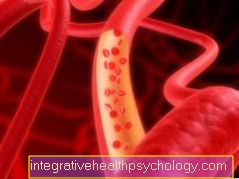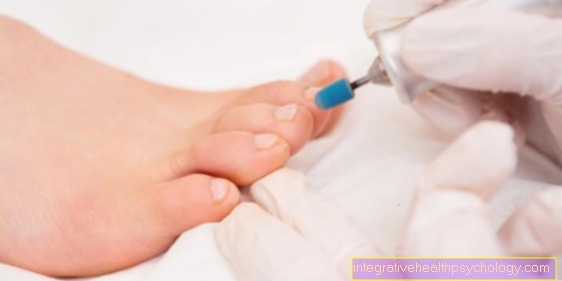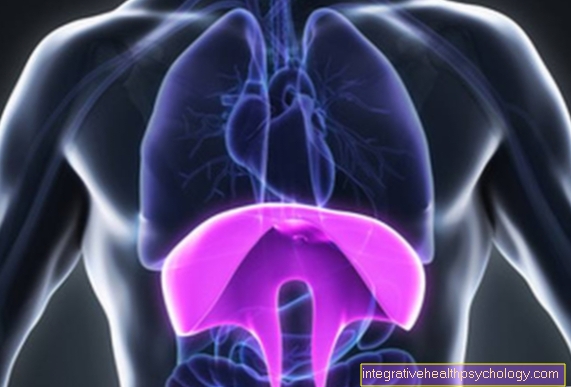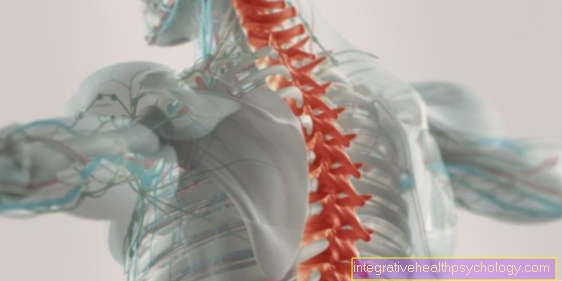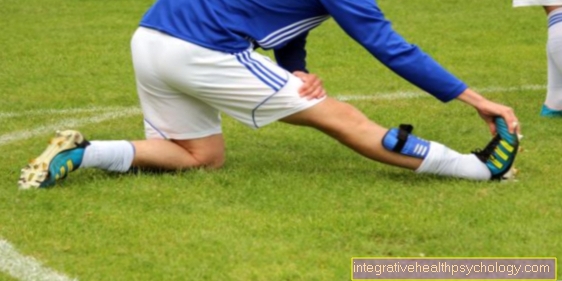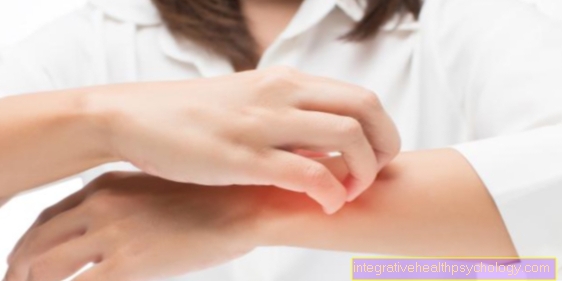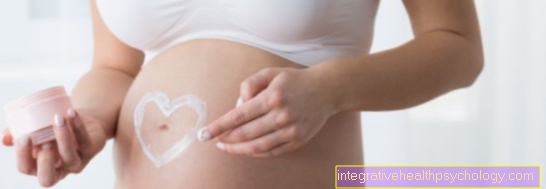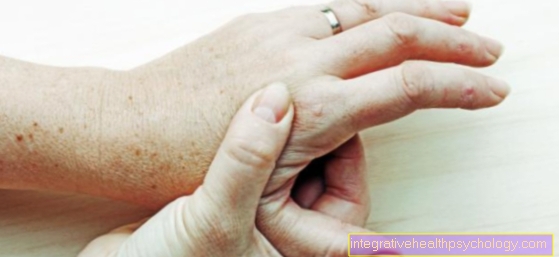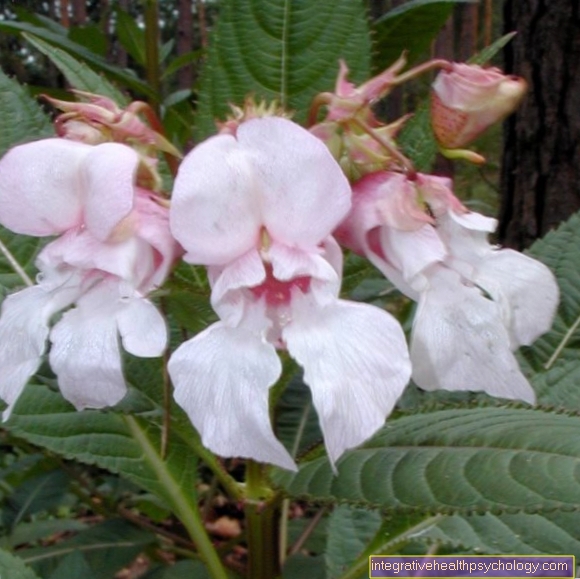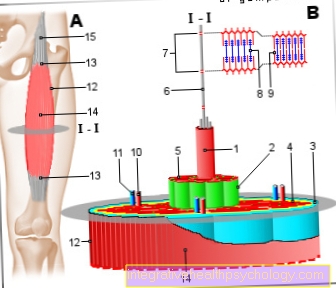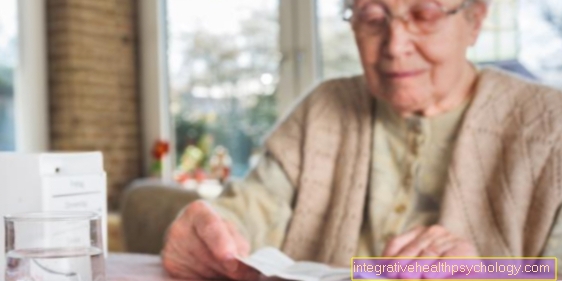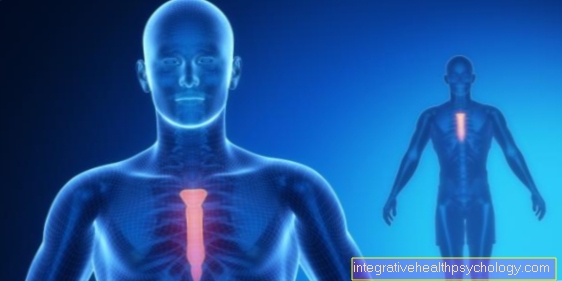Atopic dermatitis
General

Atopic dermatitis is an incurable, but relatively easily treatable skin disease. It is chronic in episodes and is not contagious. The word “atopic” means that the skin is prone to allergic reactions and is overly sensitive.
Symptoms include red, flaky skin, severe itching, and oozing skin changes. It can vary in strength and is also dependent on age. Patients who are affected by atopic dermatitis are more likely to suffer from other allergies, such as hay fever. The therapy of the skin disease usually consists of anti-inflammatory creams.
Causes of atopic dermatitis
The causes are complex and not yet fully understood. It is believed that there is not just one cause, but that a combination of many factors causes atopic dermatitis. According to experts, genetic factors, changes in the immune system and environmental influences play a role.
The word “atopic” comes from the Greek and means something like “wrongly in place” or “extraordinary”. Experts understand it to be an excessive immune reaction to certain stimuli, called trigger factors. Various substances can cause an allergic reaction.
Read more about the causes of atopic dermatitis on the following page: Causes of atopic dermatitis
The allergens / trigger factors include:
House dust and mites
Pollen
Mould
Food like milk, eggs, soy or nuts
Emotional stress
Irritants, such as chemicals and detergents
Textiles such as wool
Pathogens such as bacteria and fungi
Cold and wet weather
- Washing habits and medication
Disease emergence

The triggers are different from patient to patient and must be for each patient differently to be determined.
While the trigger factors can be easily determined, a genetic cause difficult to prove. Many genes in the development of the disease have been classified as "suspicious", but it is difficult to determine which gene is the cause of atopic dermatitis. Studies show that the genetic defects lead to a disturbed skin barrier lead and the skin thus becoming more susceptible to environmental factors / allergens.
frequency
In Europe the frequency is approx. 5-20% in childhood and becomes less common with old age. 90% of all patients develop the disease before the age of five.
Usually the disease gets better with age and therefore only complain in adulthood 30% of all those affected about symptoms. Compared to 60-70 years ago today, atopic dermatitis occurs four times more often.
The reasons are not entirely clear. Possible causes are one better hygiene and called changed circumstances. It is clear that children who grow up on a farm have fewer allergies than children who grow up in the city. This phenomenon is due to the lack of exposure of bacteria related.
Symptoms of atopic dermatitis
Symptoms vary slightly based on age. A so-called cradle cap is often noticeable in infancy. The name refers to the appearance of the scab. Cradle cap is a crusty, white rash on the child's scalp. Infants can also find areas of oozing skin, scaly, whitish skin and scratch marks. In older children there are scaly, whitish patches of skin, especially on the crooks of the arms and the back of the knees, as well as on the hands and neck area. The skin is thickened in some places and looks rough. The children also complain of itching and dry lips, as well as tears in the skin on the mouth and earlobes.
Bacteria can easily penetrate through the open, torn areas of skin and thus trigger inflammation.
The symptoms hardly change in adulthood. Here, too, the flexors of the arms and legs are particularly affected. The bad itching is often felt to be the main symptom. It is triggered by the injured, irritated skin. However, scratching the skin creates a vicious circle, because scratching creates new skin irritations, which in turn promote itching. The itching is particularly annoying at night, and many patients complain of lack of sleep and fatigue. This also often represents a psychological burden for the patient, since he no longer feels efficient. Some people affected also suffer from social exclusion and decreased self-confidence. Children in particular react to their symptoms with increased stress, which, however, can again be a trigger factor.
Other symptoms include paleness around the mouth, a double crease in the eyelid, skin inflammation on the nipples, and a whitish skin reaction after scratching (Demographism).
As mentioned above, the scratched skin harbors the risk of bacteria penetrating and causing an infection. Often the cracked skin areas are colonized by the bacterium Staphylococcus aureus. These bacteria worsen the symptoms and intensify the disease process. Fungi also feel good in the affected skin areas and can lead to inflammation. Infection with the herpes virus occurs less often. If the skin becomes infected with this virus, eczema herpaticum can occur, which can often only be treated in hospital.
Read more on the topic: Superinfection
Treatment of atopic dermatitis

Treatment for atopic dermatitis depends on the age and degree of the disease. There are many treatment approaches and not every treatment is suitable for all patients. Different treatments often have to be combined, canceled and recombined. It can take some time before the right treatment is found. The therapy has different stages, from the basic therapy as stage one to therapy with cyclosporins, which represents stage four.
Therapy levels
- 1st stage: The basic therapy includes treating the skin with various creams, ointments and lotions. Depending on the severity of the disease, the composition of the preparations changes. It is often necessary to first try out which cream or lotion works best. The skin care is used to help the skin to protect itself from the pathogens and to soothe the rough areas. If the skin becomes infected with bacteria, it may also be necessary to apply an antibacterial ointment, in the case of infections with yeasts / fungi there are antifungal ointments.
- 2nd stage: If this therapy is not sufficient, the second stage is used. It consists of ointments containing glucocorticoids back. There are different classes of glucocorticoids, from level one to three. Depending on the severity, it may be necessary to use the highest level, this would be level three of the atopic dermatitis therapy.
If you are taking glucocorticoids, please note that glucocorticoids should never be stopped suddenly, as the symptoms may worsen. Glucocorticoids always have to be "tapered off". Let your doctor advise you on this. In addition to glucocorticoids, other substances that influence the immune system can also be used. Other commonly used substances are tacrolism and pimecrolism.
- 4th stage: The fourth stage consists of a systemic therapy, which means that the medication is no longer applied to the skin, but taken. Various medications are available for this. To an antihistamine that relieves itching. Cortisone can be taken systemically for severe attacks. There is also the immunosuppressant ciclospoprin A, which can be taken in very severe forms of atopic dermatitis.
Side effects
Among the side effects of the Glucocorticoid therapy and Ciclosporin therapy belong:
- Staining on the skin,
- increased Hairiness,
- Fluctuations in blood pressure,
- Kidney damage,
- Changes in the gums,
- Increasing the risk of malignant diseases.
Aside from drug therapy, there are other supportive measures. It is important to avoid known allergens as much as possible. Are they against different food allergic please follow one diet and so avoid these foods. Also, avoid hot baths and cosmeticsthat irritate their skin.
Many patients report having one UV light therapy helps. The UV light has a anti-inflammatory Effect and can lead to the healing of irritated skin areas. Also has a Climate change often a positive effect on the disease. The climate in the mountains and by the sea can lead to a reduction in symptoms.
Also be Stress reduction by Relaxation techniques, Vitamin E. Ingestion and acupuncture described as helpful.
history
The Roman author gives us the first record of atopic dermatitis Suetonewho contributed to this disease Emperor Augustus describes. Other writings on atopic dermatitis can be found in the dermatology book of the Italian doctor Girolamo Mercuriale in the 16th Century. Early 20thCentury described the French doctors Brocq and Jacquet the symptoms and referred to the disease as Neurodermatitisbecause they assumed that the symptoms were caused by a Nerve inflammation is caused. Although this was refuted, the term still held up. In year 1930 other terms such as atopic dermatitis were used to describe the disease.


